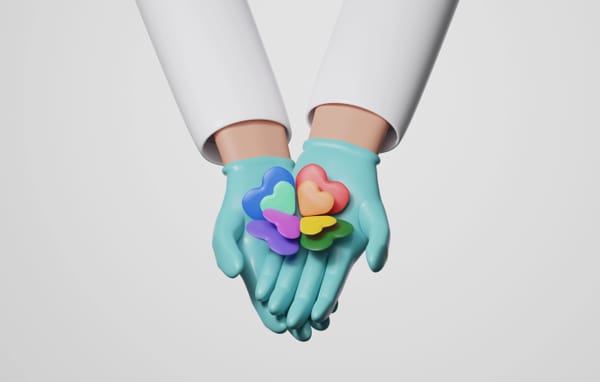Digital Identity Management: Tips for Transgender Transition

Social media plays a vital role in the lives of transgender individuals, offering a platform for self-expression, visibility, and connection with supportive communities. While managing an online identity during transition can present challenges—such as deadnaming, misgendering, and constantly evolving personal expression—there are practical steps you can take to ensure your online presence is empowering, authentic
This guide explores key approaches for updating profiles, dealing with digital deadnaming and misgendering, and leveraging social media as a tool for support and connection.
The Role of Social Media in the Transgender Community
Social media has become a cornerstone for transgender individuals seeking visibility and support. For many, it offers a way to:
- Find community: Social media provides a platform for individuals to connect with others who understand their experiences. Online groups, forums, and social platforms like Facebook, Twitter, Instagram, Reddit, and TikTok can be a source of solidarity and support.
- Share experiences and learn from others: Platforms offer opportunities for trans individuals to document their journeys, educate others, and gain insight from people who have walked similar paths.
- Access resources: Whether it's connecting with medical professionals, support groups, or advocacy organizations, social media can be an invaluable tool for finding resources and staying informed.
But with all the benefits social media offers, it’s important to recognize the challenges that come with maintaining an online identity during a time of personal transformation. As your gender expression evolves, so too will your online presence. Navigating this process thoughtfully is key to maintaining your mental health and feeling empowered in both the real and virtual worlds.
Updating Your Profiles: The Basics
One of the first steps in updating your online identity during transition is to ensure that your profiles reflect your true self. Here’s how you can begin:
Changing Your Name and Pronouns
Changing your name and pronouns across your social media profiles may feel like a momentous step. It’s important to make these changes on all of your accounts to avoid confusion and misgendering.
- Facebook: Facebook allows you to change your name in the settings. You can also add a “nickname” or alternate name if you’re not yet ready to use your chosen name officially. To change your pronouns, go to "Edit Profile," select "Pronouns," and choose your preferred options.
- Twitter: On Twitter, your handle may not necessarily align with your new name, but you can change your display name and bio. The “bio” section can also be used to state your pronouns, for example, “She/Her” or “They/Them.” Twitter also has options to include your pronouns directly in your profile.
- Instagram: Instagram allows you to edit your username, name, and bio. You can also use your bio to clarify your pronouns. Instagram doesn’t yet allow for pronoun options directly, but many users add this information themselves.
- TikTok: TikTok offers options for changing your username and bio as well, and you can display your pronouns in your bio. For visibility and clarity, many transgender users make it a point to include their pronouns early in their profile.
Profile Pictures
Updating your profile photo with an image that matches your gender identity is an important step in aligning your online presence with your authentic self. Whether you choose a recent photograph or a favorite image that expresses your gender, remember that it’s okay to update your profile frequently as your gender expression evolves.
Content and Posts
As you go through your transition, consider whether you want to update past content to align with your current identity. This could mean deleting old photos or posts that no longer reflect your gender, or even adding disclaimers in your captions explaining the journey. If you choose to keep those older posts, adding a note about your current pronouns or name can serve as a teaching moment for your followers.
Dealing with Digital Deadnaming and Misgendering
One of the most difficult challenges transgender individuals face on social media is the risk of being “deadnamed” (referred to by a name they no longer use) or misgendered (called by the wrong pronouns). These instances can be painful, but there are ways to navigate these positively and with self-care.
Managing Deadnaming
Deadnaming is an unfortunate reality for many trans individuals, and it can occur both intentionally and unintentionally. While you can update your name on many platforms, this doesn’t always prevent others from using your previous name, particularly in comments or older posts.
Here’s how to handle deadnaming:
- Set Boundaries: If someone uses your old name, it’s okay to speak up. You can politely ask them to refer to you by your current name. For example, you can say, “I’m currently transitioning, and I would appreciate it if you could use my new name and pronouns.”
- Block or Mute Users: If you’re being harassed or consistently deadnamed, consider blocking or muting the person to prevent further hurtful interactions.
- Notify Platforms: If deadnaming happens through direct messages or comments, it may be worth reporting these incidents to the platform. Some social media platforms, like Twitter and Facebook, allow users to report deadnaming as a form of harassment.
- Use a Digital Signature: On some platforms, including Instagram and Twitter, you can include your name and pronouns directly in your bio. For example, adding “Formerly [old name], now [chosen name].” This can act as a public reminder for others.
Dealing with Misgendering
Misgendering—being referred to with incorrect pronouns—can be just as damaging as deadnaming, but it can be addressed in several ways.
- Gentle Reminders: When misgendered by friends, followers, or others, a polite correction may suffice. For instance, saying, “Hey, I go by she/her now, I’d appreciate it if you could use those pronouns.”
- Pronoun Stickers or Badges: Some platforms, like Instagram and TikTok, allow users to add pronouns to their profiles. You can also create a post specifically dedicated to explaining your pronouns and identity.
- Create Content Educating Others: If you feel comfortable, consider sharing your experience with misgendering and deadnaming to educate others. This can open up a discussion on how to be more supportive of trans individuals and help raise awareness.
- Block or Report Misgendering: If someone refuses to respect your pronouns, it might be time to block or report them. There’s no obligation to maintain a relationship with people who are disrespectful to your identity.
Leveraging Social Media for Support and Connection
Despite the challenges, social media can also be an incredibly powerful tool for building connections and accessing support. Here’s how to make the most of it:
Join Transgender Communities
Social media platforms host various transgender communities where you can find shared experiences and offer mutual support. Whether on Facebook, Reddit, or Instagram, there are countless groups and pages dedicated to transgender individuals.
Some examples include:
- r/Transgender (Reddit): A welcoming space for transgender individuals to share their journeys, advice, and resources.
- Transgender Subreddit Communities (Discord): Many trans individuals gather in private Discord servers to chat in a safe, monitored space.
- Facebook Groups: There are numerous closed and open groups dedicated to supporting transgender people, such as “Transgender Support Group” or “Transgender Women Empowerment.”
Follow Advocacy Organizations
Many organizations support transgender people through social media. These organizations can be great resources for educational content, mental health support, and activism.
Some noteworthy accounts include:
- Transgender Equality Project (ACLU): @ACLU
- Transgender Law Center (TLC): @TransLawCenter
- GLAAD: @glaad
Share Your Journey (If You’re Ready)
Many transgender individuals choose to share their stories through blogs, vlogs, or social media posts. Documenting your journey can help others who are going through similar experiences feel less isolated, and it can contribute to the visibility and acceptance of the transgender community.
Helpful Resources and Contacts
If you’re navigating the challenges of social media as a transgender person, there are several resources you can turn to for advice and support:
- Transgender Equality Project (ACLU): https://www.aclu.org/issues/lgbt-rights
- Transgender Law Center: https://transgenderlawcenter.org/
- PFLAG: https://pflag.org/
- Trans Lifeline: https://www.translifeline.org/
- The Trevor Project: https://www.thetrevorproject.org/



